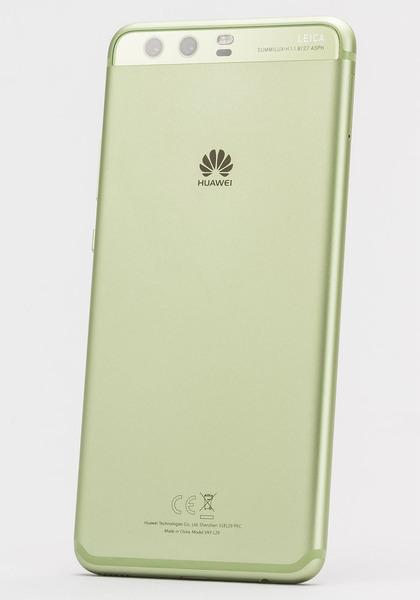HUAWEI professional photographer ve...
11
02
HUAWEI professional photographer verifies! How to use the Leica double lens camera of "HUAWEI P10 Plus"
"Huawei Communication", which conveys the appeal of Huawei products such as SIM fleece smartphones, tablets, and routers. This time, we will focus on the Leica double lens camera, which is the featured element of the “HUAWEI P10 Plus”, which can be said to be the highest class among the many SIM fleece smartphones. Professional photographers who are always familiar with various cameras, not only for work but also for hobbies, will take a look at their appeal along with sample images.
The author, who is also a professional photographer, approaches the charm and utilization of the "HUAWEI P10 Plus" equipped with a Leica double lens camera!
Exploring the charm of the Leica double-lens camera installed in the HUAWEI P10 Plus!
"HUAWEI P10 Plus", the flagship model of Huawei's SIM fleece smartphone. The full specs and sophisticated design are also attractive, but the biggest feature is probably the evolved Leica double lens camera.
The rear camera of the HUAWEI P10 Plus is named "SUMMILUX-H", which is used in Leica's high-end lenses.
The Leica dual-lens camera has an RGB sensor on one lens and a monochrome sensor on the other. As a role, the RGB sensor acquires color information, and the monochrome sensor acquires details of shapes and contours. By synthesizing the information of both, it creates a photo full of texture.
Among them, the HUAWEI P10 Plus uses a combination of a 12-megapixel RGB sensor and a 20-megapixel monochrome sensor. The lens is named "SUMMILUX-H 1:1.8/27 ASPH." With a bright F1.8 lens, you can take in a lot of light even in indoor or night scenes, and you can shoot while suppressing noise and camera shake.
Another point is that the Leica lens is used for the 8-megapixel in-camera. It can be said that it is a luxurious specification that is not ashamed of the name of the flagship model.
The in-camera is also a Leica lens
This time, we asked a professional photographer to review this HUAWEI P10 Plus Leica double lens camera, show examples of actual shots, and introduce recommended usage. Mr. Katsuya Suo, a professional photographer who is familiar with digital camera review articles on ASCII.jp, cooperated with us.
I touched Huawei's flagship model "HUAWEI P10 Plus" this time, but the lens is still the most eye-catching. The name "SUMMILUX" is adopted for the Leica double lens of this unit. Other models use "SUMMARIT", but SUMMILUX is a more attractive lens.
In the first place, the name of the original Leica lens tends to be determined by the open F value, and SUMMARIT is generally used for lenses with open F values from F1.5 to F2.5. There are many lineups from wide-angle to telephoto, but they are excellent in terms of relatively small size and light weight, and have a wide range of versatile lenses.
SUMMILUX, on the other hand, is the name given to lenses with an open F value of F1.4. There are many large-aperture lenses from wide-angle to medium-telephoto. Although it tends to be a little heavy and large due to its large aperture, it is a lens that is particularly popular with Leica fans because it provides a sweet and soft depiction near the maximum aperture and sharp images when stopped down.
Any Leica lens is a luxury item, but SUMMILUX is a brand that ranks high among them, and it can be said that it is a truly special lens. The fact that SUMMILUX was adopted for HUAWEI P10 Plus gives the impression that it is a special existence.
The "SUMMILUX-H" lens used in the HUAWEI P10 Plus has an open F value of F1.8. Unfortunately, it's not F1.4, but it's for smartphones, so you don't have to worry about the details. The fact that you can use SUMMILUX lenses with your smartphone, which you usually carry with you, is attractive enough.
The usability of the camera app is also inherited from Leica's camera
The standard camera app of the HUAWEI P10 Plus is also Leica-like, and it is quite easy to use. The standard shooting is programmed auto, and you can switch between strobe on/off, wide aperture, portrait mode, and film mode with color tone adjustment. You can switch settings by tapping the icon at the top of the screen.

You can access each function such as "Wide Aperture" and "Film Mode" just by tapping the icons lined up at the top.
In film mode, you can choose from 3 color tones: ``Vivid color'' with flashy coloring on the upper left, ``Soft color'' with subdued coloring on the right, and standard.
Basically, you can take beautiful pictures even if you leave it to auto, but since you chose and purchased the HUAWEI P10 Plus equipped with a Leica lens, there are probably many people who would like to make some settings. In that case, you can switch to "PRO" mode by simply sliding the tab above the shutter button up. In this mode, the metering method, ISO sensitivity, shutter speed, exposure compensation, AF operation, and white balance can be switched arbitrarily.
There is no physical aperture, so the aperture is fixed and the exposure is adjusted by shutter speed and ISO sensitivity. In addition to specifying numerical values, these two also have auto positions, so you can use shutter speed priority auto or ISO sensitivity priority auto.
In "PRO" mode, you can change the settings at the bottom of the screen. The fonts and shutter sounds displayed here are also Leica style and I felt the commitment
Swipe the screen to the right to display the shooting mode switching screen. In "Others", you can download nice food mode, voice photos, document scanning, watermarks dedicated to HUAWEI P10 Plus, etc.
An interesting feature is the grid display. In general, lines that divide the screen into three are often displayed, but it has a function to display a curve called a Fibonacci spiral. If the subject is placed in the center of the screen, the composition tends to be mediocre.
When considering the composition, it is important to balance the subject and the empty space, and it is easy to create a balance in the empty space.
By simply arranging the subject while keeping the spiral in mind, you can take a picture with a different impression than when you simply bring it to the center.
Also, just because the image sensor is a small smartphone, it is not weak for shooting at high sensitivity. I actually felt that the image quality was higher than that of a general compact digital camera. The highest sensitivity can be set up to ISO3200, but the effect on detail and noise is fairly noticeable. However, if the main purpose is to view images on a smartphone, such as uploading to SNS, ISO3200 is sufficient image quality.
ISO50
ISO100
ISO200
ISO400
ISO800
ISO1600
ISO3200
The focal length of the lens is equivalent to approximately 27mm in 35mm format. You can shoot as close as about 5 cm in front of the lens, so you can take powerful shots. When I heard SUMMILUX, I was reminded of the semi-wide angle of view of 35mm with the image of silver halide Leica, and I imagined that the angle of view was a little wider, but the 27mm is more convenient than the half-finished 35mm. good.
Shooting in normal shooting mode with auto. You can get as close as 5 cm in front of the lens, so you don't have to worry about the working distance. Descriptive power and definition of texture are quite high
I was surprised at the resolving power of monochrome photos
I was also surprised at the resolving power of monochrome data. Monochrome images produced from ordinary RGB sensors are structurally converted to monochrome images after the colors have been complemented, so in many cases, they are nothing but color photographs with no color. However, the monochrome data of the HUAWEI P10 Plus is attractive because it can obtain the definition as if it was taken with a silver salt monochrome film.
I compared the same subject in color and monochrome. The quality of the colors is astounding, but the quality and detail of the monochrome is even more surprising. Edge sharpness and gradation expression are comparable to mirrorless and single-lens reflex class large format sensors.
The highlight side tends to be a little overexposed, but it has high performance for a camera installed in a smartphone. The gradation on the shadow side is quite wide, and the reproduction of details is excellent.








